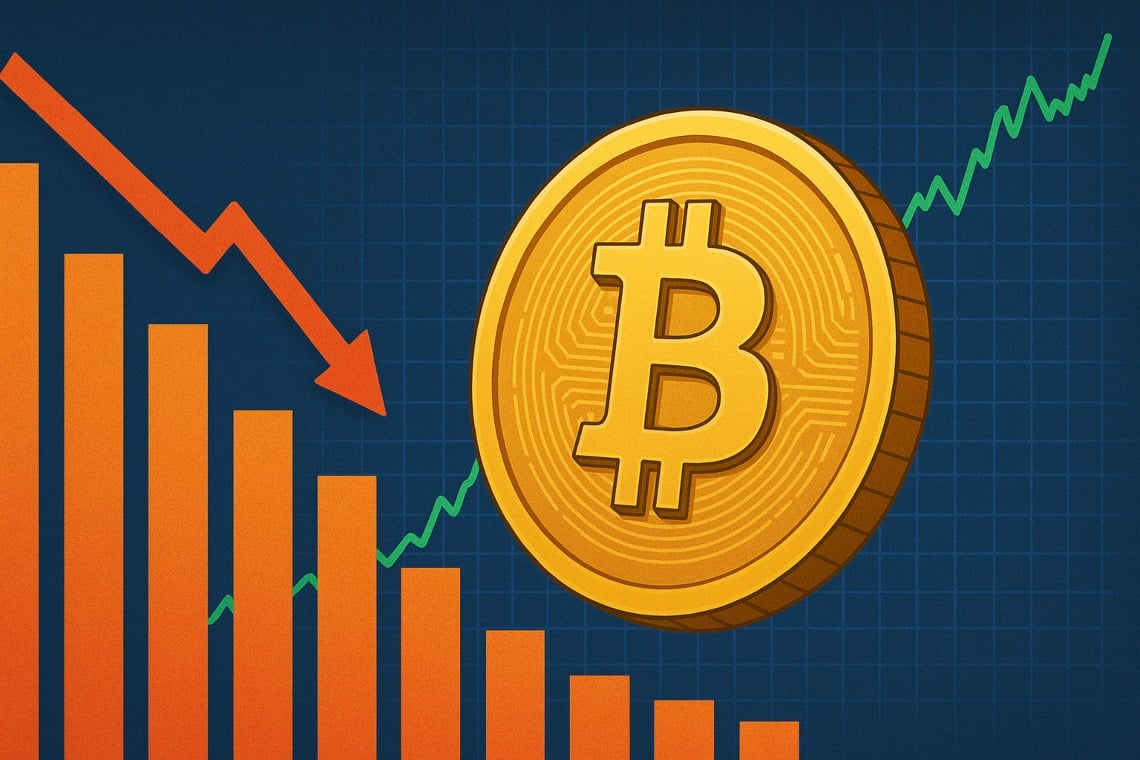decline in transactions while the price reaches new highs

In recent months, Bitcoin has approached its all-time highs, surprising with a price increase that does not coincide with a rise in the number of transactions on the blockchain. This scenario raises questions about real demand, user participation, and network sustainability, outlining new perspectives for miners, investors, and industry observers.
The decline of transactions on the Bitcoin blockchain
One of the fundamental characteristics of Bitcoin is the public and transparent visibility of all its transactions through the blockchain. However, according to recent observations, at the moment when the price of Bitcoin reached record levels, the amount of transactions executed on the network marked a sharp decline. This trend appears opposite to the expectations traditionally associated with a bull market.
More precisely, on the Saturday reported by analysts, the mempool—the temporary area where transactions await confirmation—hosted just about 5,000 transactions pending. Although the number later rose to 15,000, it remains significantly lower compared to the 150,000 transactions left pending when the price had exceeded 100,000 dollars towards the end of 2024. Since March, pending transactions have fluctuated between 3,000 and 30,000, confirming a relatively weak demand on the network.
User participation decreasing despite record prices
The current low transaction density suggests a decrease in individual participation in the ecosystem. Many analysts point out that the growth in Bitcoin’s price has occurred without a corresponding involvement of retail users, that is, small investors.
Joël Valenzuela, marketing and business development director, interprets the situation as “a significant crisis,” adding that the percentage of transaction fees in the miners’ total earnings is now less than 1%. Valenzuela also expresses concern about the risk that the network may become an increasingly centralized entity, managed by states and institutions, in the absence of widespread participation typical of decentralized environments.
Lack of retail investors and impact on decentralization
Joao Wedson, founder of the analysis platform Alphractal, also notes that the “almost absence of transactions in the mempool” represents a clear signal of the lack of small active users on the network. Wedson argues that only a strong increase in transactions would represent proof of a return of retail investors in the Bitcoin market.
The effect on miner compensation and network sustainability
The reduction in transaction volume directly affects the revenues of miners, especially regarding transaction confirmation fees. When the demand for block space is low, miners receive most of their income through the fixed block reward, while the portion coming from transaction fees becomes minimal. Currently, as highlighted by Valenzuela, the percentage of these revenues has plummeted below 1%.
This scenario ignites the debate on the long-term sustainability of Bitcoin, especially considering that the division of block rewards, known as halving, will make transaction fees increasingly central to the earnings of miners over time.
Decentralization of the ecosystem and future risks
The contrast between high prices and reduced participation generates concerns for the future of the network’s decentralization. If the trend were to continue, the management of nodes and mining processes could be centralized in the hands of a few large institutional players, threatening the original philosophy of Bitcoin.
At the same time, the low level of traffic also suggests a lower propensity of users to transfer funds, hypothetically due to the speculative nature of purchases or a tendency towards holding, that is, the prolonged maintenance of assets in personal portfolios.
Possible signs of recovery and scenarios to watch
While experts do not rule out scenarios of strengthening in the near future, the key element to monitor remains the transaction density and the response of retail users. A revival of activities on the network could redefine the conditions of sustainability and decentralization, as well as change the perception of the sector in the eyes of investors.
- Monitor the growth of the mempool can provide clear indications of changes in interest and participation.
- The strategie dei miner will undergo possible adjustments, focusing on operational efficiency or the search for new revenue models.
- The role of retail users, currently absent, will be crucial in outlining the real usage trend of the network.
Relationship between price, user activity, and miner revenue
Recent data documents an unusual discrepancy between the sharply rising price of Bitcoin and its daily utility. This divergence strengthens the debate on the real function of the blockchain, which today appears less engaged compared to the major phases of popular adoption seen in the past.
In this phase, the relationship between price, participant density, and miner revenues emerges as a crucial indicator for the future development of the network. If in the past every new price cap was accompanied by an explosion of activity on the blockchain, today the picture seems reversed, highlighting the importance of a careful assessment of fundamentals and user behaviors.
Bitcoin between risks, opportunities, and new perspectives of observation
The current framework highlights risks, such as centralization and the erosion of commission revenues, but also suggests the opportunity to rethink strategies and roles within the ecosystem. The price growth without transaction growth raises new questions for developers, investors, and policy makers, suggesting the need to closely monitor developments in the coming weeks and months.
The mempool fill indicators remain a fundamental analysis tool, capable of anticipating shifts in user behavior and the organization of the network itself. A future recovery of activities, possibly driven by the return of retail investors, could redefine Bitcoin’s position within the global financial and technological landscape.
Ultimately, Bitcoin is in a phase of profound transformation. Those who operate, invest, or develop on its network will need to pay attention not only to the surface prices but also to the intensity of daily activity and the signals of the real market, thus rediscovering the dynamic and sometimes unpredictable nature of the ecosystem.
